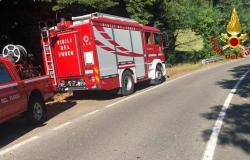Today we’re continuing our science activities at the Vera Rubin Ridge (VRR) location “e.” It certainly seems that “e” should stand for “exciting,” as we’ve collected quite a rich set of observations at this location, including extensive imaging and geochemical analyses.
In today’s plan, we’re focusing our attention on small-scale features in the rocks in front of the rover to try and understand how they formed. We have a nice long science block in the early afternoon, during which we’ll use ChemCam to assess the targets “Macleans Nose 2,” “Funzie 2,” and “Ullapool.” The targets with “2” in their name are intended to be repeat observations of targets that we analyzed over the weekend to gather additional information. We’ll then take a small Mastcam mosaic to document some of the VRR terrain further away from the rover.
Following the science block, we’ll deploy the arm to take a closer look at some interesting rock features. The first is “Rona,” a beautiful large white vein, seen in the image above. We’ll use the MAHLI camera to take a series of high-resolution images of the vein to look at its interior, along with an APXS observation to see what the vein is made out of. Finally, we’ll take additional MAHLI images of the target “Loch Maree,” a patch of dark gray material.



